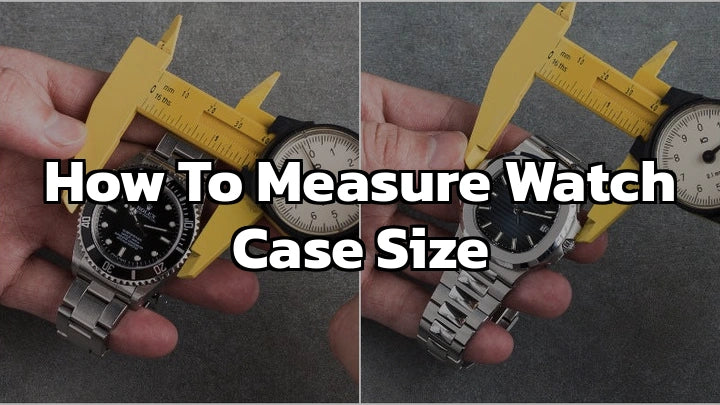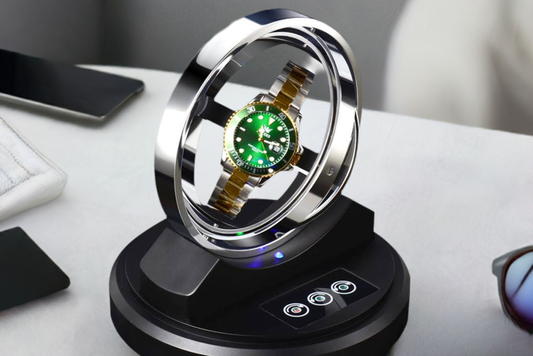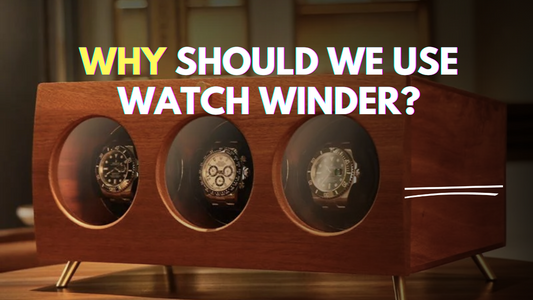Measuring watch case size accurately is crucial for finding the perfect fit and style. This guide covers the exact techniques, including diameter, height, and lug-to-lug measurements, to ensure you understand every aspect of watch dimensions.
Measuring Watch Case Diameter
Credit: YouTube Channel - Timed Square
What You Need to Know
-
Measure the Widest Part of the Case: To accurately measure the diameter of a watch case, measure the widest part of the case, excluding the crown. This ensures that you capture the maximum diameter of the watch case.
-
Use a Caliper for Precision: For precise measurements, use a caliper. A caliper allows you to measure the distance between two points with high accuracy. If a caliper is not available, a ruler can be used as a substitute, but it may not provide the same level of precision.
-
Ensure Consistency by Measuring Across Multiple Lines: To ensure consistency in your measurements, measure across multiple lines around the case. This helps to account for any irregularities in the case shape and provides a more accurate average diameter.
Tools and Techniques
- Caliper: A caliper is the preferred tool for measuring the diameter of a watch case. It provides precise measurements and can be used to measure both the inner and outer diameters of the case.
- Ruler: If a caliper is not available, a ruler can be used as a substitute. However, rulers may not provide the same level of precision as a caliper, especially for smaller watch cases.
Common Applications
- Watch Collectors and Enthusiasts: Accurate diameter measurements are essential for watch collectors and enthusiasts who need to compare and contrast different watch models.
- Watch Repair and Maintenance: Watchmakers and repair professionals require precise diameter measurements to ensure that replacement parts fit correctly and to diagnose issues with the watch case.
- Watch Design and Manufacturing: Watch designers and manufacturers need to measure the diameter of watch cases to ensure that their designs meet specifications and to optimize production processes.
Key Statistics and Facts
- Average Watch Case Diameter: The average diameter of a men's watch case is around 40-42 mm, while women's watch cases typically range from 30-36 mm.
- Variation in Watch Case Sizes: Watch case sizes can vary significantly depending on the brand, model, and style. Some watches can have case diameters as small as 25 mm or as large as 50 mm.
- Importance of Accurate Measurements: Accurate diameter measurements are critical in watch design and manufacturing, as small variations can affect the overall fit and functionality of the watch.
Understanding Lug-to-Lug Height
The lug-to-lug height refers to the distance between the top of one lug to the top of the opposing lug. This measurement is essential in understanding the overall size and fit of a watch on the wrist.
Lug Design and Perceived Size
The lug design of a watch plays a significant role in how large or small the watch appears on the wrist. Lugs are the protrusions on either side of the watch case that the strap or bracelet attaches to. The shape, size, and style of the lugs can greatly impact the perceived size of the watch.
Measuring Lug-to-Lug Height
To get an accurate measurement of the lug-to-lug height, measure from the top of one lug to the top of the opposing lug. This measurement should be taken in a straight line, parallel to the watch face. Using a ruler or caliper, place one end at the top of one lug and extend it to the top of the opposing lug. Take note of the measurement in millimeters.
Why Lug-to-Lug Height Matters
The lug-to-lug height determines how the watch will sit on the wrist. A watch with a longer lug-to-lug height may overhang the wrist, causing discomfort and making the watch appear larger than it is. On the other hand, a watch with a shorter lug-to-lug height may sit snugly on the wrist, making it appear smaller.
Watch Case Depth: The Third Dimension
Why It Matters
The case depth, also known as the thickness, is the measurement from the top of the crystal to the caseback. This dimension significantly affects both the comfort and style of the watch.
To accurately measure the case depth, you need to consider two primary components: the crystal and the caseback. The crystal is the transparent material that protects the dial and hands, typically made of sapphire, acrylic, or mineral glass. The caseback is the rear of the watch case that houses the movement and other internal components.
Impact on Comfort and Style
The impact of case depth on comfort is significant. A watch with a thicker case depth can cause irritation and discomfort, especially if it digs into the skin. This is particularly true for watches with a larger diameter, as the increased size can amplify the discomfort caused by the thickness. Furthermore, a thicker case depth can make the watch more prone to scratches and damage, as it is more exposed to the environment.
In terms of style, the case depth can greatly affect the overall aesthetic of the watch. A thinner case depth can give the watch a sleeker, more modern appearance, while a thicker case depth can make the watch appear bulkier and more rugged.
Comprehensive Measurement Process
Step-by-Step Guide
-
Diameter Measurement: Use a caliper to measure the diameter of the watch case. For a single crown watch, measure from the 2 o'clock to 8 o'clock position. This ensures that you are measuring the diameter without including the crown. You can also measure from the 4 o'clock to 10 o'clock position if needed.
-
Including the Crown: When measuring the diameter, consider whether to include the crown size. For watches with a prominent crown, it may be necessary to include it in the measurement. This is particularly important for chronograph watches with multiple buttons.
-
Lug-to-Lug: Measure the lug-to-lug distance accurately to account for different wrist sizes and styles. Use a caliper to measure the distance between the opposite sides of the watch, which is typically done by placing the caliper's exterior jaws over the lugs.
-
Case Thickness: Measure the case thickness from the crystal's highest point to the caseback. Use a caliper to measure the height of the watch case, taking care not to scratch the watch.
Pitfalls in Watch Sizing
Common Mistakes to Avoid
-
Measuring with the Crown Included: One common mistake is including the crown in the measurement of the watch case diameter. The crown is not part of the case itself and can significantly alter the measurement. To get an accurate reading, measure the case diameter excluding the crown.
-
Neglecting Lug Design in Overall Size Estimation: Another mistake is neglecting the lug design when estimating the overall size of the watch. Lugs are not included in case size measurements, so it is essential to leave some room for the lugs when measuring your wrist for case diameter size.
-
Not Considering Personal Wrist Size: A critical mistake is not considering personal wrist size when assessing watch dimensions. Wrist size plays a significant role in determining the appropriate watch size.
Essential Tools for Precision
-
Digital Calipers: Digital calipers are the most precise tool for measuring watch case dimensions. They provide accurate readings with a high degree of precision, typically with a resolution of 0.01 mm or better.
-
Rulers for a Quick Estimate: Rulers are simple, inexpensive tools that can provide a quick estimate of watch case dimensions. While not as precise as digital calipers, they are useful for a rough measurement or when a digital caliper is not available.
Finding the Perfect Fit
Guidelines for Different Wrist Sizes and Preferred Watch Sizes
- Small wrists (5.5-6.5 inches / 14-16.5 cm): 34-38mm watch case diameter
- Medium wrists (6.5-7.5 inches / 16.5-19 cm): 38-42mm watch case diameter
- Large wrists (7.5-8.5 inches / 19-21.5 cm): 42-46mm watch case diameter
- Extra-large wrists (above 8.5 inches / 21.5 cm): 46mm and above watch case diameter
These guidelines serve as a starting point, and personal preference ultimately plays a significant role in selecting the perfect watch size.
Case Size Impact on Style and Comfort
- Style: A larger watch can make a bold fashion statement, while a smaller watch can provide a more understated look. However, a watch that is too large can clash with certain outfits or styles, and a watch that is too small may not be noticeable.
- Comfort: A watch that is too large can cause discomfort due to its weight and size, potentially digging into the wrist. On the other hand, a watch that is too small may not provide the desired presence on the wrist.
Real-Life Examples and Wrist Presence
Case Studies
-
Rolex Submariner: The Rolex Submariner No-Date Ref. 114060 has a case diameter of 40mm, a case thickness of 12.5mm, and a lug-to-lug length of 47.6mm. This watch is suitable for wrists with a circumference of 6.5 to 7.5 inches.
-
Omega Seamaster Planet Ocean: The Omega Seamaster Planet Ocean 600M Co-Axial Master Chronometer 39.5mm has a case diameter of 39.5mm, a case thickness of 14.4mm, and a lug-to-lug length of 45.2mm. This watch is suitable for wrists with a circumference of 6 to 7 inches.
-
Cartier Calibre de Cartier: The Cartier Calibre de Cartier W7100016 has a case diameter of 42mm, a case thickness of 11.8mm, and a lug-to-lug length of 49.5mm. This watch is suitable for wrists with a circumference of 6.5 to 7.5 inches.
-
Tag Heuer Carrera: The Tag Heuer Carrera Calibre 5 39mm has a case diameter of 39mm, a case thickness of 12.3mm, and a lug-to-lug length of 45.5mm. This watch is suitable for wrists with a circumference of 6 to 7 inches.
-
Breitling Navitimer: The Breitling Navitimer 8 B01 41 has a case diameter of 41mm, a case thickness of 13.9mm, and a lug-to-lug length of 49.2mm. This watch is suitable for wrists with a circumference of 6.5 to 7.5 inches.
Conclusion
Mastering the art of measuring watch case size ensures a harmonious blend of style and comfort. With this guide, you'll be equipped to navigate the world of watch dimensions with confidence, making informed decisions for your next timepiece. Remember, precision is key, and understanding the nuances of each measurement will lead to a perfect fit every time.
We hope this comprehensive guide has provided you with valuable insights into measuring watch case size. If you have any further questions or would like to share your own experiences, please feel free to leave a comment below. Don't forget to share this article with your fellow watch enthusiasts to help them find their perfect timepiece!




